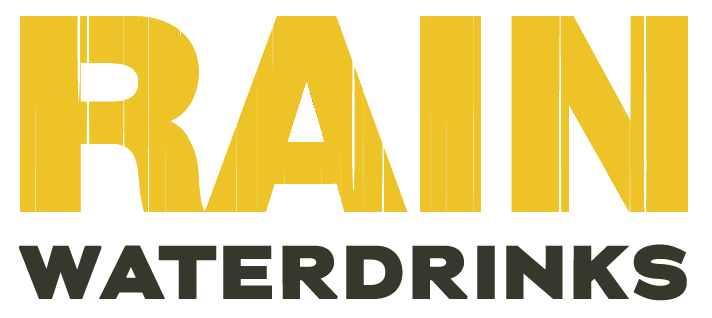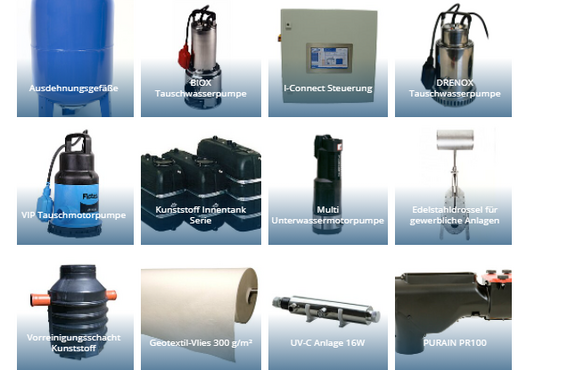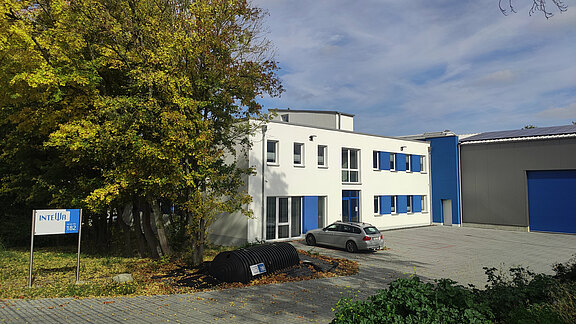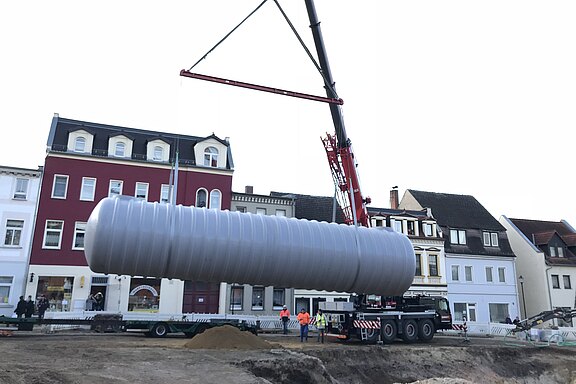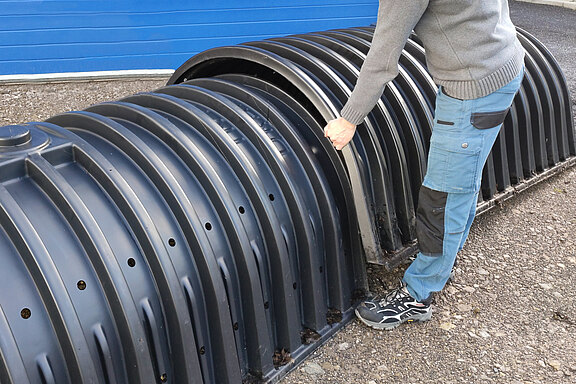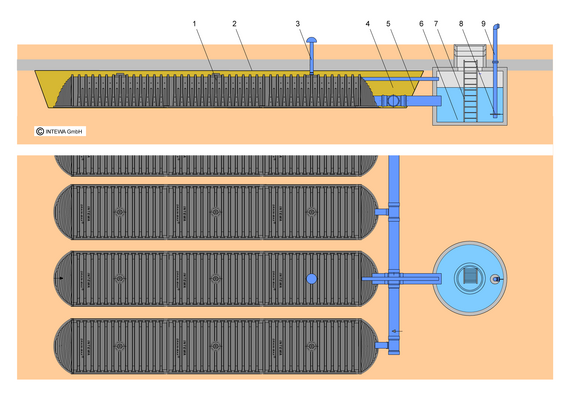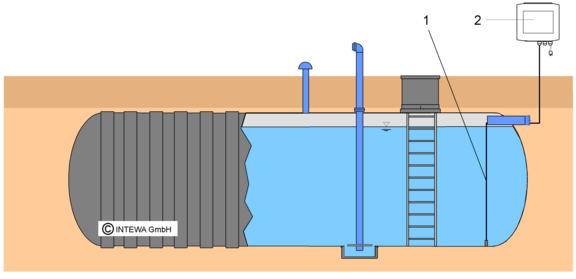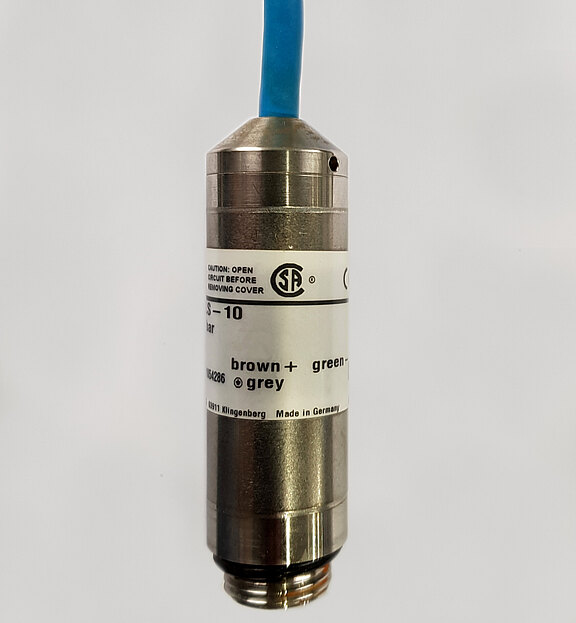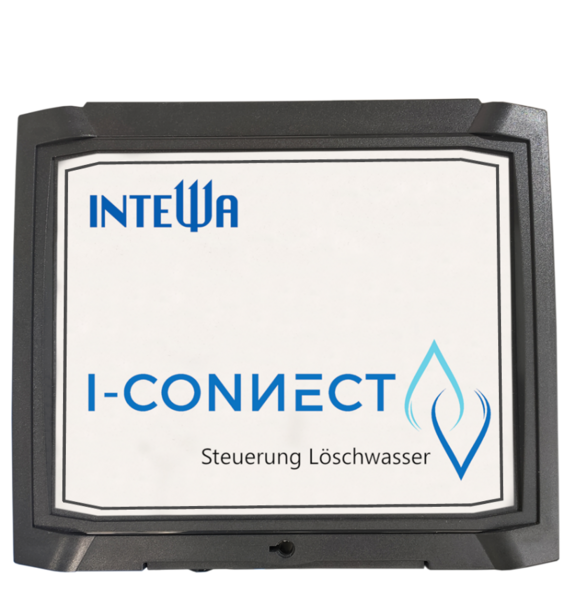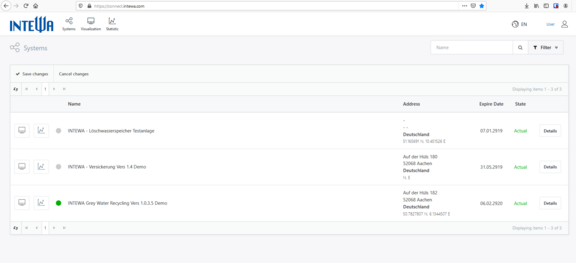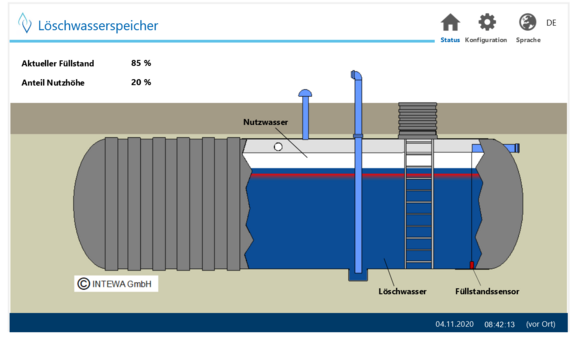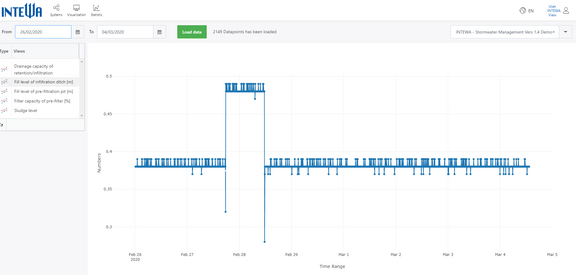Fire Water Technology 4.0
Fire water tanks go digital!
One of the most important measures of preventive fire protection is the provision of extinguishing agents in sufficient quantities. Water is the most suitable extinguishing agent for the vast majority of fires. If supply from the drinking water network is possible, this solution is implemented. In many cases, however, an independent supply of fire water is necessary. Open water bodies, fire water wells, fire water ponds and underground fire water tanks can be a solution here. The calculation of the extinguishing water requirement when drawing from tanks depends on the type of development. For new developments, a decentralized fire water tank allows reduced cross-sections of the drinking water supply. An underground fire water tank is an artificially created, covered fire water storage room. DIN 14230 distinguishes here between small (75 - 150 m³), medium (150 – 300 m³) and large (over 300 m³) tanks. Depending on the required size, space requirements, delivery time and desired design, glass fiber reinforced plastic tanks or the DRAINMAX tunnel system in a waterproof foil jacket are a good choice.
Glass fiber reinforced fire water tanks in one piece
In recent years, glass fibre reinforced plastic storage tanks, so-called GRP storage tanks for fire water storage, have proven particularly successful. Today, these are produced project-related and inexpensively up to 200 m³ volume in one piece on an automated production line with ribbed design. A heavy-duty driveability of up to 60 t (SLW60) and a small space requirement during installation are possible in this way.
The tunnels can be laid quickly in any size and are approved by the German Institute for Construction Technology (DIBt) for SLW60 heavy-duty class (60 t truck). Due to the stackability of the tunnels there are very low transport and storage costs as well as delivery times. This system is also interesting when there is no access to the construction site for the large GRP tanks. All tunnel rows are connected to the central shaft via connecting pipes. Thus they can be inspected and cleaned according to DIN 14230. The central connection shaft has a pump sump and the connection possibility for fire water extraction according to the standard.
| 1. DRAINMAX tunnel | 4. Tunnel backfilling | 7. Ladder |
| 2. Foil or fleece | 5. Foil jacket | 8. Anti-vortex plate |
| 3. Ventilation | 6. Pump sump | 9. Suction pipe |
Current state of the art in fire water technology
Up to now, the fill level of fire water storage tanks has only been monitored manually, if at all. This poses a major safety risk in the event of a fire, if the intended water level would no longer be available due to leakage or even unauthorized withdrawal for another application, such as irrigation. For this reason, fire water storage tanks have not been used for other applications with additional storage volume up to now. However, the use for other possible applications could provide significant advantages. For example, in addition to fire water storage, the storage tank is also ideally suited for drinking or cooling water emergency storage. If the additional volume with rainwater is to be used for irrigation, as service water or attenuation volume, a corresponding rainwater filter and an overflow must be planned.
INTEWA CONNECT remote monitoring of fire water systems
With the innovative I-CONNECT technology, fire water systems can now be used multiple times worldwide, as they can be remotely monitored. I-CONNECT uses the symbiosis of hardware, the system buried in the ground, and a control system and software, which is clearly displayed via an interface on a PC, tablet or smartphone or offline via a USB connection. Plant operators are now able to control or monitor their system at any time. For example, the current fill level can be displayed via the continuous documentation of this data or alarms can be activated if the fill level is too low.
1. Pressure sensor
2. Controller
The function is made possible by a pressure sensor installed at the bottom of the fire water tank. It determines the filling level and can thus also detect a leak in the system. If the water level in the tank falls below a specified threshold, a signal is output and the operator is informed.
Controller, Cloud Server and Security
Compared to other systems, the connection between controller and cloud server requires no additional port forwarding and no VPN. A direct, multi-encrypted connection via LAN is established. Access via app and web browser is via an encrypted HTTPS connection (security certificate). The data is stored on secure IONOS 1&1 servers in Europe. The controller allows output to all common BMS (Building Management Systems), such as Bacnet, Modbus and KNX.
The use of the cloud is based on an inexpensive licensing system. After login, the INTEWA Connect cloud server provides a clear structure that enables the storage of any system.
Here the user gets all important information about the condition of the system at a glance, such as fill level, share of process water and maintenance timer.
Under "Configuration" the system can be configured. This is normally only done once during commissioning. Here the maximum tank height and the percentage of allowed process water are defined.
Statistics can be shown for all parameters for any period of time:
Summary and outlook
The new I-CONNECT technology enables for the first time a comprehensive remote monitoring of fire water systems. The system visualizes the current status inside the system and thus enables the volume to be monitored. In the event of insufficient fire water supplies, the operator is warned automatically and worldwide at all times via the INTEWA cloud server. Regardless of whether part of the storage tank is used for other purposes, such as emergency storage for cooling or drinking water, the entire system is always ready for use. Compared to the total costs and the additional safety, the new technology is inexpensive and defines a new state of the art in fire water storage.
Dipl. Ing. Oliver Ringelstein
INTEWA GmbH
Auf der Hüls 182
52068 Aachen
Phone: +49 (0) 241 96605 0
Author: Oliver Ringelstein, INTEWA GmbH
Characters: 6.912 incl. spaces
Version: 10.11.2020
Further information: www.intewa.com
Note:
Modifications of the article are only allowed with the explicit permission from the author!
*All visualizations show the current status. Any kind of changes are reserved.

